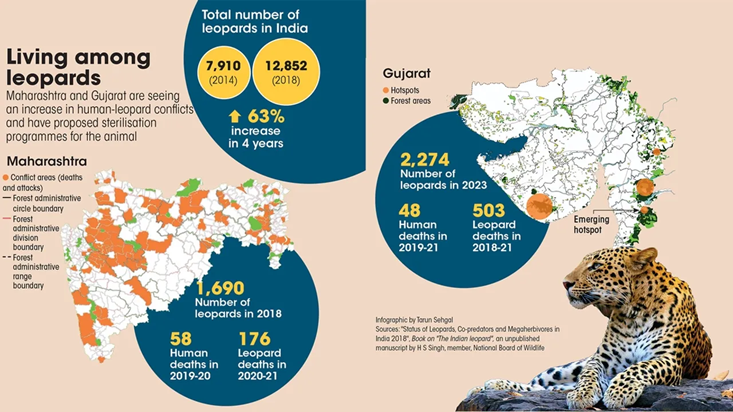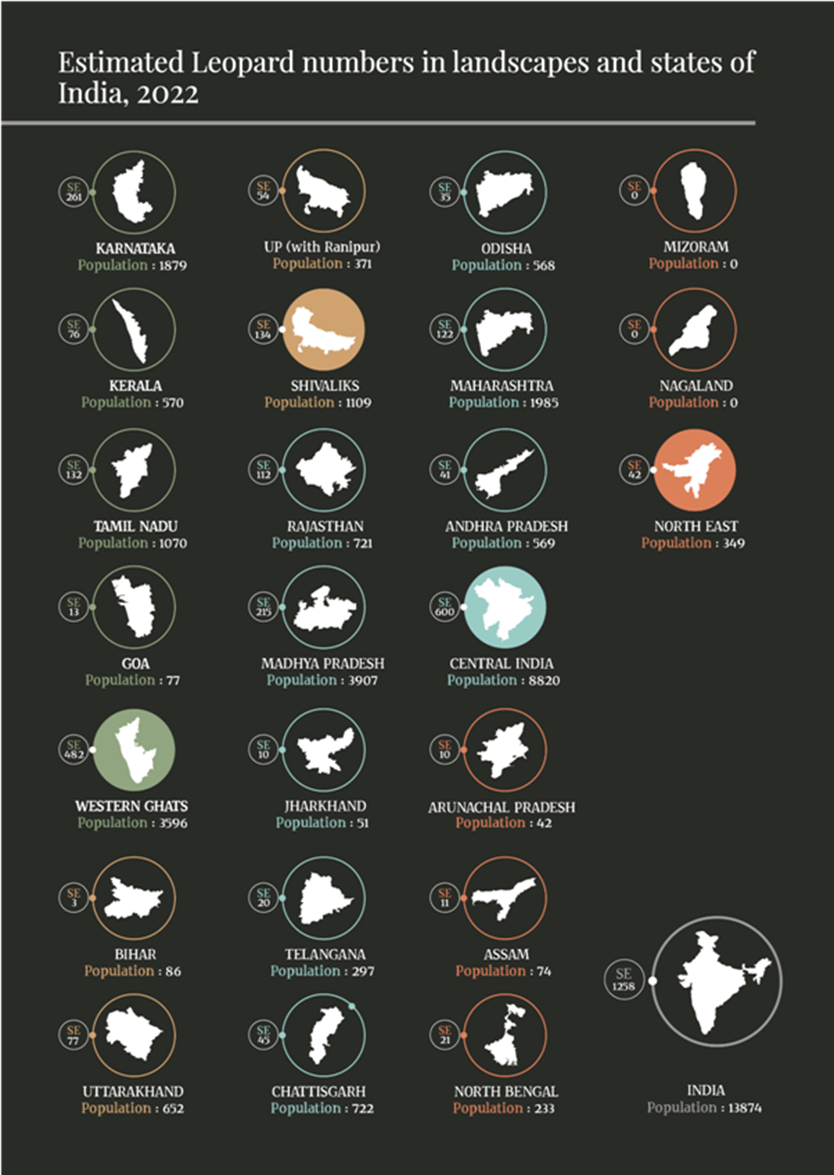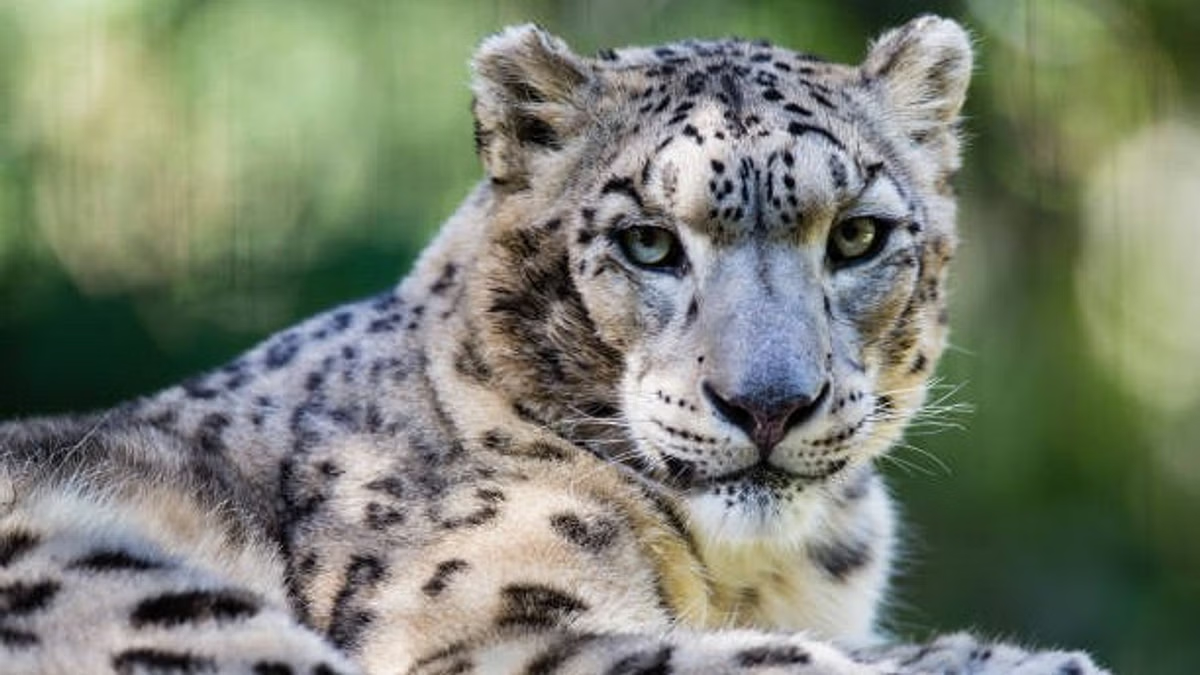- Courses
- GS Full Course 1 Year
- GS Full Course 2 Year
- GS Full Course 3 Year
- GS Full Course Till Selection
- Online Program
- GS Recorded Course
- NCERT (Recorded 500+ Hours)
- Polity Recorded Course
- Geography Recorded Course
- Economy Recorded Course
- AMAC Recorded Course
- Modern India, Post Independence & World History
- Environment Recoded Course
- Governance Recoded Course
- Science & Tech. Recoded Course
- International Relations and Internal Security Recorded Course
- Disaster Management Module Course
- Ethics Recoded Course
- Essay Recoded Course
- Current Affairs Recoded Course
- CSAT
- 5 LAYERED ARJUNA Mentorship
- Public Administration Optional
- ABOUT US
- OUR TOPPERS
- TEST SERIES
- FREE STUDY MATERIAL
- VIDEOS
- CONTACT US
INDIA RELEASES 5TH CYCLE LEOPARD POPULATION ESTIMATION
INDIA RELEASES 5TH CYCLE LEOPARD POPULATION ESTIMATION
29-02-2024
- The National Tiger Conservation Authority (NTCA) and the Wildlife Institute of India (WII) have jointly released a comprehensive report on the status of leopards in India.
- This report provides information about leopard distribution, population trends, and conservation challenges based on data collected during the 5th cycle of leopard population estimation conducted in 2022.
- Madhya Pradesh has the largest population of leopards in the country - 3907 (2018: 3421), followed by Maharashtra (2022: 1985; 2018: 1,690), Karnataka (2022: 1,879; 2018: 1,783) and Tamil Nadu (2022: 1,070); 2018:868)
|
Survey Methodology:
- The leopard census was conducted as part of the quadrennial(period of four years) survey aimed at monitoring tigers, co-predators, prey, and their habitats across 18 tiger states in India.
- Field teams extensively covered forest habitats, walking over 641,000 kilometers of trails to estimate leopard signs and prey abundance.
- Camera traps were deployed at 32,803 locations, resulting in over 85,000 leopard photo-captures.
- Scientific methodologies combining habitat evaluation, camera trapping, and population modeling were employed to analyze the data.
Key Findings:
- India's leopard population is estimated at 13,874 individuals, indicating a stable population compared to 2018 estimates.

- States like Madhya Pradesh, Maharashtra and Karnataka have large populations of leopards, with Madhya Pradesh leading.
- Protected areas and tiger reserves, such as Nagarjunsagar Srisailam Tiger Reserve and Panna Tiger Reserve, support high densities of leopards.
Population Trends:
- The overall leopard population at the national level has remained stable since 2018, with Central India and Eastern Ghats showing minor annual growth rates.
- However, the Shivalik-Gangetic landscape has witnessed a concerning annual decline in leopard numbers.
- Notably, there's a marginal growth rate of 1.08% in specific areas surveyed in both 2018 and 2022, but this doesn't cover approximately 30% of leopard habitats not surveyed.
Conservation Challenges:
- Rising human-leopard conflicts pose significant conservation and social challenges, highlighting the importance of securing habitats outside protected areas.
- Habitat division, poaching, prey depletion, killings, traffic accidents, and illegal wildlife trade are key threats.
- Climate change impacts may worsen resource pressures, necessitating urgent conservation interventions.

Recommendations:
- Strengthen protection in tiger corridors and buffer zones to facilitate wildlife movement.
- To promote community management models in multi-use forests with incentives for co-existence.
- Develop early warning systems using technology to prevent conflict scenarios.
- Enhance coordination between central and state agencies.
- Expand monitoring to unsurveyed areas by including conflict hotspots in future census efforts.
Conclusion:
The report highlights the critical importance of proactive conservation measures and collaborative efforts to safeguard India's leopard population and their habitats.


